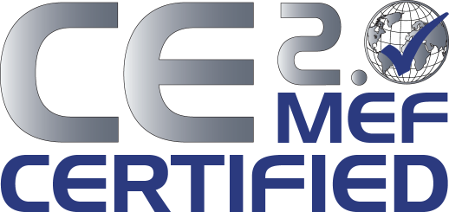A Standards-based Approach to Media Networks
STOCKHOLM—The fact that IP is now the technology of choice for media networks, from the studio to the wide area, for contribution, acquisition and exchange, is without question. But there is a degree of uncertainty in the industry with regards to what to expect from an IP-based network.
With SDI, we knew exactly what we were getting. With IP and Ethernet it depends on how a network is built. This is where the importance of a standards-based approach comes in. A standards-based approach that is not only about which technologies to use, but also about what the resulting services should look like and how they should perform.

The MEF is an organization that is doing just that. They’ve outlined a set of standards for Carrier Ethernet, named CE 2.0, which defines exactly what to expect in terms of quality, characteristics and service behaviors. These standards take Ethernet from a business LAN technology to a carrier-grade technology for wide area networks. The MEF also demands that service providers and equipment vendors alike follow these standards to make sure network users get what they expect.
The CE 2.0 standards are centered on service assurance, ensuring that Carrier Ethernet services meet pre-defined levels of service quality. The standards also advise on how to apply tools for policing, shaping and classification right through to guaranteeing service level agreements (SLAs), as well as service OAM (Operations Administration and Maintenance) tools for monitoring. Moreover, the standards define a common language for SLAs, enabling the comparison of services from multiple providers.
While the shift to software-defined and cloud-based production requires media networks to be more dynamic and flexible, service assurance remains the foundation on which media networks must be built. The focus, therefore, of the CE 2.0 standards are well aligned with the requirements placed on IP-based media networks.
COMBINING THE ASSURANCE OF CARRIER ETHERNET WITH THE REACH OF THE INTERNET
What Carrier Ethernet is today is nothing compared to what we will witness in the near future. To meet the emerging demands of live media services, networks will need to deliver not only the reliability of Carrier Ethernet, but also the flexibility and on-demand characteristics of the internet. The media industry has seen a shift to customer self-provisioned connectivity offered by the minute, driven by requirements from broadcasters and production companies for increased flexibility. Going forward, shifting live production to software-defined and cloud-based environments will place further requirements on media networks to be even more flexible. This need for more flexibility is something that the MEF is addressing with its ‘Third Network’ vision. Adding to the Carrier Ethernet 2.0 standards, its vision defines how future networks can deliver the flexible, high-quality broadcasting that IP can enable on a global scale. It’s about combining the service assurance of Carrier Ethernet, with the reach and agile on-demand characteristics of the internet.
Get the TV Tech Newsletter
The professional video industry's #1 source for news, trends and product and tech information. Sign up below.
Built on three key pillars—agility, assurance and orchestration—the ‘Third Network’ vision is about rapidly adapting to the demands of users and applications, and to ensure that this agility is not only available locally, but globally. The orchestration of services across multiple networks from different operators is part of this vision. In this more dynamic media world, this vision would simply become another “internet” without the service assurance offered by Carrier Ethernet 2.0 standards.
GETTING CERTIFIED
The MEF will play a crucial part in the transition from SDI to IP because the occasional-use nature of media services means that the combination of Carrier Ethernet quality and internet reach is a perfect fit. File-based workflows, remote and distributed production and varying capacity needs, will require on-demand connectivity with assured performance. This will enable global connectivity, reinforced by the MEF’s ‘Third Network’ vision, to align with how media networks should perform in transporting and delivering content to consumers who increasingly expect to watch live television from anywhere in the world—be that a large live event with a global audience or niche content with viewers spread out across the globe.
The push for media networks and media services to fulfill future needs and deliver on the growing demands placed on them is clearly standards-based. The MEF today certifies both service providers and equipment vendors, properly verifying that equipment and networks deliver a service according to standards.
Using MEF-certified equipment and network services guarantees that when moving from SDI to IP media connectivity all requirements set out by a service provider are fulfilled. It also ensures SLAs between operators can be properly compared and service provider performance can be assured. Overall, the MEF standards are contributing to making the IP transition a successful one,and are imperative to the future of broadcasting.
Alexander Sandström is strategic product manager at Net Insight. He can be reached via TV Technology.
